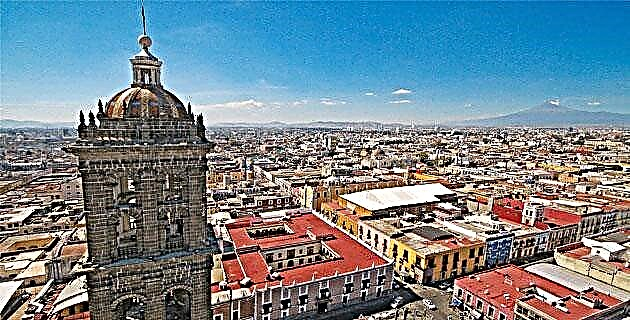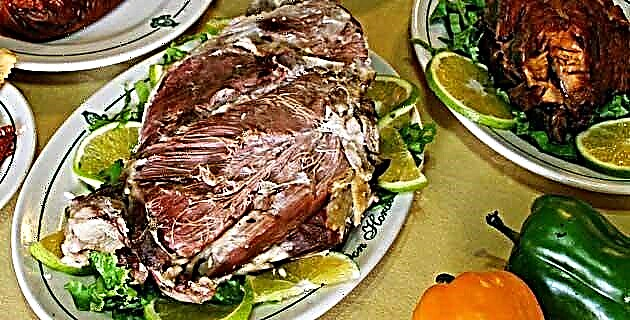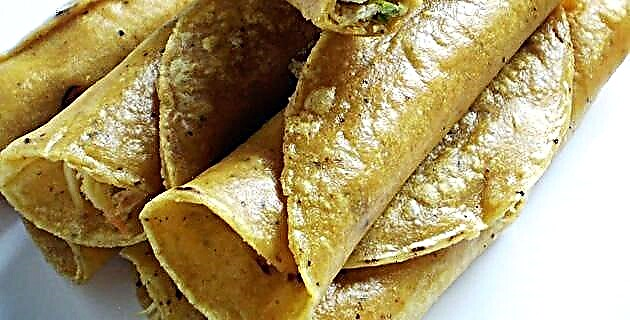
Mexico offers a wide variety of these ideal delicacies to savor at any time of the day and almost anywhere. Bon Appetite!
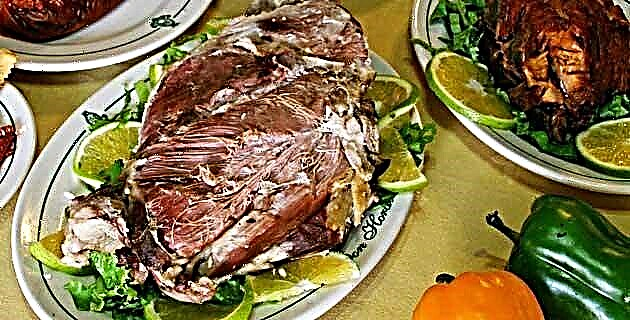
BARBECUE TACOS WITH BORRACHA SAUCE
The barbecue is prepared by burying the meat wrapped in maguey leaves in a hole made in the ground, with embers and hot stones at the bottom. Its original consumption corresponds precisely to the pulquero states bordering Mexico City: Hidalgo, Tlaxcala, Puebla, the State of Mexico and the Federal District itself. Currently the barbecue traditional is made of lamb, but if sheep are not raised in the region, they are goat. It is rarely prepared from chicken or pork, except in the Yucatecan case of mucbipollo and the cochinita pibil, since both foods are in fact barbecueas they are cooked in a pit. These tacos in the center of the country they are prepared in tortillas freshly made on a comal and drunk sauce is added, so called because it is an emulsion of pulque Y pasilla. In addition, the stomach of the lamb or goat is stuffed with the minced viscera and a seasoning of chili peppers, aromatic herbs and spices; this virtual package, called montalayo, there is also barbecue. In some southern regions of the State of Mexico it is customary to fill the large intestine with brains and spinal cord prepared with onion and epazote, to also turn it into a special barbecue called bishop, which alludes to the proverbial gluttony of the high clergy. The usual time to eat barbecue tacos is on midday and they are practically not available at night, perhaps because the usual thing is to put the meat in the hole at sunset and take it out the next day. Let's conclude with a pertinent clarification: our classic barbecue should not be confused with that sweet marinade that they are used to in the United States and that they call barbecue, frequently writing it Bar-B-Q, which they spread on various meats that they generally grill on charcoal.
After this "class", go ahead and prepare a delicious barbecue (don't worry, this time it is not necessary to make a hole) and the drunken sauce to accompany them.
INGREDIENTS
(Serves 8 people)
1 maguey stalk cut into pieces,
1 leg of mutton,
1 onion,
2 cloves of garlic,
2 black peppers,
1/2 teaspoon thyme,
2 teaspoons oregano,
salt to taste
For the drunk sauce
10 cooked green tomatoes
6 pasilla chili peppers deveined and soaked in hot water
1 clove garlic
2 tablespoons oil
1 tablespoon of vinegar
1/2 cup of pulque
1/2 teaspoon salt or to taste
100 grams of grated aged cheese (optional)
PREPARATION METHOD
The onion is ground with the rest of the ingredients and the mutton leg is spread with this. In a large tamalera a bed is made with half the pieces of maguey stalk, the leg of mutton is placed on these and then covered with the rest of the stalks. Add water to the steamer and cook over the fire until the meat is soft. Care must be taken that there is no lack of water during cooking.
For the drunken sauce, grind the tomatoes with the pasilla peppers, garlic, oil, vinegar, pulque and salt to taste. Pour into a sauce boat, add the cheese and mix well.
(Oh, and don't forget the tortillas)
Bon Appetite!
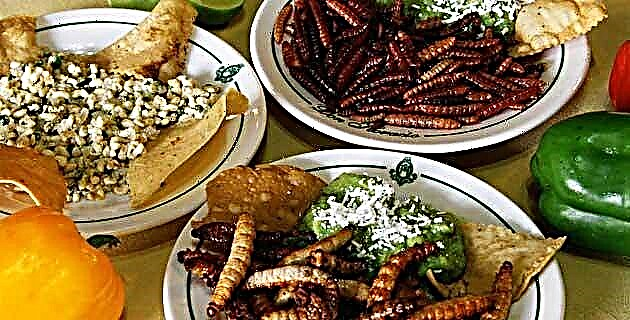
More than a variety, it is a series of exotic and unique regional tacos, therefore, its consumption is limited to the inhabitants of small geographical areas or to city restaurants. Here are a few examples.
From charales: They are common in the lake areas of the State of Mexico, Michoacán and Jalisco. The small fish are fried, and placed in the Taco, Bell pepper sauce and a few drops of lemon are added. They can also be made with charales roasted on the cob, as a tamale; the best are sold in the tianguis of Toluca.
Of acociles: these crustaceans are typical of the lake areas of the center of the country. The acocil It is a miniature shrimp that is boiled with salt. It is eaten whole, without removing the head, shell, or limbs.
From maguey worms: they get used especially in the pulque areas of Hidalgo, Tlaxcala and the Mexico state. The very expensive worms are larvae of butterflies that make holes in the low leaves of the maguey, towards the heart of the plant, as they feed on it. The animals are fried until golden brown; to make a classic taco of maguey worms Guacamole must first be spread on the tortilla, as this rich sauce has, in this case, a strategic mucilaginous function: its viscosity adheres to insects and avoids costly and frustrating losses.
From escamoles: it is ant eggs or caviar. They are served fried in butter to enhance their delicate flavor. They correspond to the region of the country typically mexica (meshica) from the states of Mexico, Hidalgo, Puebla and Tlaxcala.
From grasshoppers: they are characteristic of Oaxaca. The crickets finer and smaller are those of alfalfa, while those of milpa (corn) are slightly larger; they are boiled in water with garlic and lemon and thus sold in the market. The buyer fries them at home with more garlic, until golden brown. They are eaten like this, putting them in a tortilla with dried chilli sauce.
Of living jumiles: the jumil or mountain bug is an extraordinary common food in the Hot land of warrior, Morelos and the Mexico state. It has an exotic and strong flavor, almost spicy, reminiscent of pepper or licorice.
From ahuaucles: This delicacy is the roe of the water flies from the center of the country, especially from the Valley of Mexico. They are prepared in omelettes with chicken eggs or in battered and fried pancakes.
Others indigenous tacos Insects are: ants, corn worm, "bulls" or plague of the avocado leaf, cactus worms, dragonfly larvae, cicadas, wood borers, etc. Have you tried any of them?
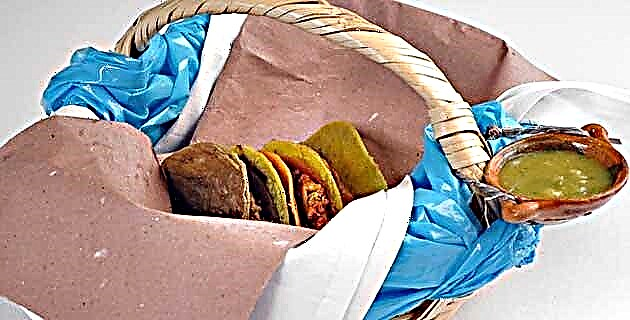
They are characteristic of Mexico City. Its convenient presentation and easy handling allow employees and workers to eat them secretly behind a desk or counter. These tacos they are not prepared at the moment. They come inside a basket that frequently travels on the rack of a bicycle; they are made and properly wrapped in ordinary cloth, from the manufacturer's house to the hungry mouth of the consumer.
The most liked are those of green mole of pipián (should be said pepián, because that word comes from pepita), shredded and stewed beef; of beef adobo, potato with sausage or alone, minced meat, pork rinds in red sauce or refried beans. A portion of these stews is served inside two small tortillas not rolled, but folded, and because they are kept warm in the basket, they end up sweaty and impregnated with their respective fat. Although the stews are already seasoned with some spice, they usually add serrano or jalapeño peppers with pickled carrot slices, or a green sauce with ground avocado, a kind of diluted guacamole. The most usual time to eat sweaty heels it's around noon; they are rarely seen in the afternoon and never at night.
GET A TACOS OF GREEN PIPIÁN
(Serves 8 people)
2 whole chicken breasts
1 onion divided into two parts
2 cloves of garlic
1 stick of celery
1 carrot, halved
1 1/2 cups (approximately 200 grams) pumpkin seeds
1/4 cup coriander leaves
4 lettuce leaves washed
1 clove garlic
5 serrano peppers, or to taste
1 medium onion
1 tablespoon lard or corn oil
Salt to taste
PREPARATION METHOD
The chicken is cooked with the onion, garlic, celery, parsley, carrot and salt to taste, until it is tender. Strain the broth. The chicken is allowed to cool and shredded. The nuggets are roasted over low heat in a pan until they start to explode, taking care not to burn them. They are blended with the chicken broth, coriander, chilies, lettuce, garlic and onion. The butter is melted and the ground is fried there and left to season for a few minutes, the cooked chicken is added, left to boil for 10 more minutes and served.





